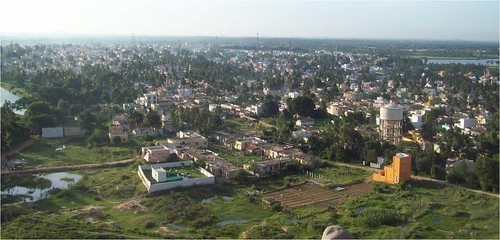Contamination, Pollution and Quality
Some strategies for managing groundwater by Aditi Mukherji, IWMI
Posted on 22 Feb, 2013 09:53 AMGroundwater is essential for India's agricutural economy. However, there is a large variation in the groundwater resources of each region. Some regions are already over-exploited, while others can still tolerate more withdrawal. In her blog 'Waterscapes', Aditi Mukherji discusses the need for regional strategies to manage groundwater economy.
Dealing with arsenic in rural Bihar - Evaluating the successes and failures of mitigation projects
Posted on 21 Feb, 2013 11:51 PMArticle Courtesy: Delft University of Technology
Author(s): Matthijs Brouns, Merijn Janssen, Andrew Wong
Assessing the land use change and its impact on water resources: A study on the Mula and Mutha rivers catchment area in Pune
Posted on 17 Feb, 2013 09:11 PMLand use changes hydrologic system and have potentially large impacts on water resources. An assessment in an area with seasonally limited water availability and which is subject to rapid socio- economic development and population growth will provide an exemplary view on the local impacts of major recent developments in India. In this backdrop this paper analyzes past land use changes between 1989 and 2009 and their impacts on the water balance in the Mula and Mutha Rivers catchment upstream of Pune. The aim of the paper is:
- assess the land use changes between 1989/1990 and 2009/2010
- analyze the impacts of these changes on the long-term water balance components in the Mula and Mutha Rivers catchment upstream of the city of Pune.
Influence of anthropogenic contamination on fluoride concentration in groundwater: A study of Mulbagal town, Kolar district, Karnataka
Posted on 15 Feb, 2013 04:53 PMGroundwater contamination is a serious, but relatively ignored issue in the country. This contamination occurs in either through geogenic or anthropogenic means. Fluoride contamination is one such example of geogenic contamination that is widely found in the Kolar district of Karnataka. However, the fluoride levels in the town of Mulbagal are lower than those in the surroundings. Earlier, a study was conducted on the impact of pit toilets on the groundwater in the area. The present paper investigates the presence of any link between these two phenomena.
Corrosion induced oil pipeline leak in Chennai blows lid off two-year-old problem of CPCL pipeline and affects water table
Posted on 14 Feb, 2013 10:38 PMAuthor: M Valliappan
Handbook for flood protection, anti-erosion and river training works by Central Water Commission (2012)
Posted on 13 Feb, 2013 09:43 PMThis handbook by Central Water Commission aims to provide necessary guidance to the field engineers in the state and central for design, appraisal, construction and monitoring of the flood management works covering all the relevant BIS codes, design manuals, guidelines, technical specifications for construction materials and practices etc. to meet new challenges in the flood management in India.
Guidelines for decentralized wastewater management by Ministry of Urban Development (2012)
Posted on 12 Feb, 2013 07:36 PMThis guideline is prepared by the Centre of Excellence in the area of Decentralized Wastewater Management, in the Department of Civil Engineering at Indian Institute of Technology, Madras, which comes under Ministry of Urban Development
Punjab ranks highest in the country, in level of water pollution caused by industries - Roundup of the week’s news (January 28 - February 3, 2013)
Posted on 04 Feb, 2013 05:20 PMWater pollution by industries: Punjab ranks highest
Delhi’s draft water policy released - Roundup of the week’s news (January 21 -27, 2013)
Posted on 28 Jan, 2013 08:14 PMDelhi’s draft water policy
Assessment of exposure, intake and toxicity of fluoride from groundwater sources in Unnao district of Uttar Pradesh
Posted on 28 Jan, 2013 01:40 PMFluoride is one of the most commonly found elements in the earth’s crust. It is naturally found d in water and helps in healthy tooth development and cavity prevention. However its high concentration in water can be harmful to human health. The amount of Fluoride (F) occurring naturally in groundwater is governed principally by climate, composition of the host rock, and hydrogeology. As per the World Health Organization and Indian Council of Medical Research the permissible limit to fluoride in drinking water is 1.5mg/L. Anything more than this value can cause fluorosis (dental and skeletal), which can affect the bones and teeth. In the backdrop of this aspect of water quality, this paper in RASĀYAN Journal of Chemistry, tries to assess the exposure to fluoride through drinking water consumption and to elucidate fluoride endemic areas through mapping in Unnao district of Uttar Pradesh.





